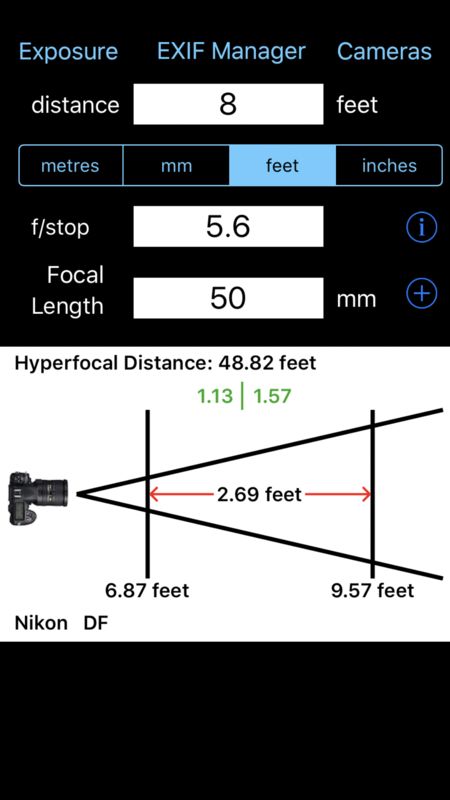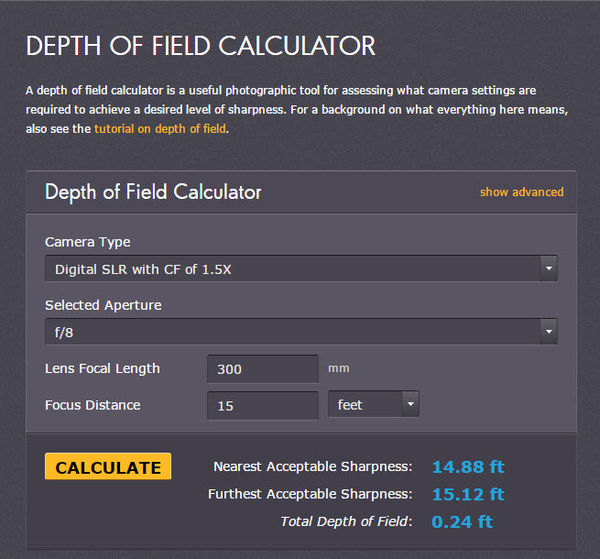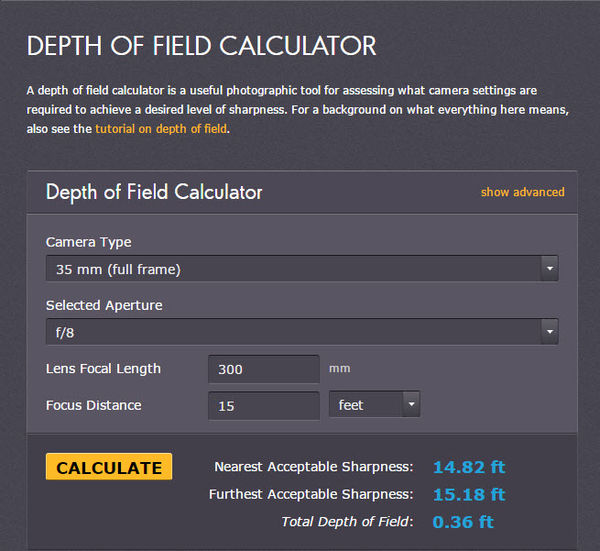Are you familiar with crop factor times aperture?
Jun 5, 2017 06:49:33 #
This sounds like a repeat of the other thread we were on. I totally agree with you.
Gene51 wrote:
Read this:
http://www.uglyhedgehog.com/t-377405-4.html
I went toe to toe with Mr. Northrup, and basically debunked most of that video, using his own source DXO Labs. He seems quite confused by all of this, and has caused many to be similarly confused. He may be good for other matters, but he gets a zero on this topic.
http://www.uglyhedgehog.com/t-377405-4.html
I went toe to toe with Mr. Northrup, and basically debunked most of that video, using his own source DXO Labs. He seems quite confused by all of this, and has caused many to be similarly confused. He may be good for other matters, but he gets a zero on this topic.
Jun 5, 2017 07:30:30 #
>Focal lengths, aperture, and shutter speed are my main numerical interests when it comes to photography.
And maybe ISO?
And maybe ISO?
Jun 5, 2017 07:55:28 #
Rab-Eye wrote:
I had never heard of this before. If accurate, it ... (show quote)
The notion of having a factor for multiplying the aperture has to do with "for equivalent full frame DOF for equivalent fields of view" and has NOTHING to do with light gathering or exposure - which everyone seems to fail to mention when they talk about aperture factoring !
 They assume that everyone knows this
They assume that everyone knows this 
Jun 5, 2017 08:09:48 #
Rab-Eye wrote:
I had never heard of this before. If accurate, it ... (show quote)
The idea of multiplying f/stop by crop factor is to equivocate the *Depth of Field* you get by going to a shorter lens to maintain the same angle of view. An aperture of f/2.8 on a 25mm Micro 4/3 lens has about the same depth of field as f/5.6 on a 50mm full frame lens at the same distance and angle of view.
The exposure remains the same!
Jun 5, 2017 08:35:56 #
Rab-Eye wrote:
I had never heard of this before. If accurate, it ... (show quote)
The crop factor affects DOF. The DOF is the equivalent of 8.4 on a full frame camera, but, the light gathering is still 5.6.
Jun 5, 2017 08:44:44 #
Jun 5, 2017 09:01:18 #
Rab-Eye wrote:
I had never heard of this before. If accurate, it ... (show quote)
The f-stop number is the ratio of the focal length of the lens to the diameter of the aperture. Since the size of the sensor does not change either of those factors the f-stop number would remain the same.
Jun 5, 2017 09:15:51 #
Rab-Eye wrote:
I posted this already, but let me respond to you directly: I had watched a Nikon video, then as you surmised, I watched one (the first one I had ever seen) by Tony Northrup, and indeed it was he who said you have to multiply the aperture by the crop factor. It was my error saying Nikon was the source, and I apologize for wasting everyone's time. I did not know Mr. Northrup's reputation.
I think Northrup is ok on many things, but this in particular is not his strength. Something about circles of confusion, airy disks pixel pitch, angle of view on different formats with specific focal lengths, T-Stops vs F-Stops and the best one, Perceptual Megapixels - that seem to befuddle many photographers.
Anyway, I don't think it was a waste of time as long as you arrived at a conclusion that follows logic and works for you!
Jun 5, 2017 09:31:32 #
phlash46 wrote:
The crop factor affects DOF. The DOF is the equivalent of 8.4 on a full frame camera, but, the light gathering is still 5.6.
I think you have to add more to this.
Light tranmission will be similar, unless the T-Stop value is widely different. Even at the same Fstop aperture, which is a calculation based on the ratio between the focal length divided by the diameter of the entrance pupil of a lens, there are factors that will affect how much light is actually transmitted through the lens.
A 300mm on a crop camera at the same distance from a subject and aperture will have LESS DoF than a full frame camera. With a 1.5 crop sensor, the DoF on the full frame will be 50% greater, primarily because the crop standard uses a smaller circle of confusion, and if something is out of focus, it will be more evident than with a larger circle of confusion. This has a more meaningful impact if you compare printed images at the same print size - the crop image will have to be printed to a 50% higher magnification.
Things change, of course when you adjust distance to subject, or focal length to get the "same" composition, and often the effect is that the crop will have greater depth of field. Of course it will - you either have to move back or use a shorter focal length lens to get the same composition, but you still have to magnify it 50% more assuming you are looking at a comparable composition.
This is less obvious when viewing images on screen btw.
Jun 5, 2017 09:33:42 #
Brucej67 wrote:
This sounds like a repeat of the other thread we were on. I totally agree with you.
Sorry 'bout that . . .
Eventually the word will get around - but probably not in my lifetime

Jun 5, 2017 09:42:04 #
burkphoto wrote:
The idea of multiplying f/stop by crop factor is to equivocate the *Depth of Field* you get by going to a shorter lens to maintain the same angle of view. An aperture of f/2.8 on a 25mm Micro 4/3 lens has about the same depth of field as f/5.6 on a 50mm full frame lens at the same distance and angle of view.
The exposure remains the same!
The exposure remains the same!
I misread this at first as it is about 1 stop difference on APS-C but 2 Stops on m43 seems to work as a rule of thumb and if using a full frame camera with depth of field markings you can adapt the scale reasonably well. The focus distance should be the same with the lens used on any format.
The last time this came up someone posted a youtube video which experimented with 2 ways to get the hyperfocal distance and just plain old focus to infinity. Infinity focus seemed to win in terms of sharpness for landscapes.
https://www.youtube.com/watch?v=_JSV5HoGjGw This little video brings up a good point infinity marked on the lens is not always infinity so by using live view and focusing on the far distance and then using a silver sharpy to make a mark to use later for infinity focus at night.
In theory this may be the better mark to use for hyperfocal distance too. The infinity mark like a side was 8 its the intersection of the two o's that 'should' line up.
Jun 5, 2017 10:19:04 #
Gene51 wrote:
Read this:
http://www.uglyhedgehog.com/t-377405-4.html
I went toe to toe with Mr. Northrup, and basically debunked most of that video, using his own source DXO Labs. He seems quite confused by all of this, and has caused many to be similarly confused. He may be good for other matters, but he gets a zero on this topic.
http://www.uglyhedgehog.com/t-377405-4.html
I went toe to toe with Mr. Northrup, and basically debunked most of that video, using his own source DXO Labs. He seems quite confused by all of this, and has caused many to be similarly confused. He may be good for other matters, but he gets a zero on this topic.
1st thing, I don't follow Mr. Northrup. I do check out several different "talk" pages for some items that might include his pages. My latest look was for wide angle lenses and drones.
What I have noticed is that Mr. Northrup is a Nikon guy and a DJI guy. (No major problems with that.) It's is very hard to evaluate something else objectively when you have already made up your mind in the real world as Mr. Northrup has. I've noticed many other evaluative "talk" pages have that problem also.
For an example, I purchased the Pentax K20D and spent more time using it than I'd like to mention. Because of that when I purchase a newer model, I often finding myself wishing the newer camera had some of the older camera's features. (If you understand my train of thought.)
Jun 5, 2017 10:25:51 #
I completely agree with Gene51. Tony Northrup doesn't understand the fundamentals of optics.
[Gene51quote=Gene51]Read this:
http://www.uglyhedgehog.com/t-377405-4.html
I went toe to toe with Mr. Northrup, and basically debunked most of that video, using his own source DXO Labs. He seems quite confused by all of this, and has caused many to be similarly confused. He may be good for other matters, but he gets a zero on this topic.[/quote]
[Gene51quote=Gene51]Read this:
http://www.uglyhedgehog.com/t-377405-4.html
I went toe to toe with Mr. Northrup, and basically debunked most of that video, using his own source DXO Labs. He seems quite confused by all of this, and has caused many to be similarly confused. He may be good for other matters, but he gets a zero on this topic.[/quote]
Jun 5, 2017 10:37:44 #
Jun 5, 2017 11:19:26 #
wdross
Loc: Castle Rock, Colorado
Rab-Eye wrote:
I had never heard of this before. If accurate, it ... (show quote)
As long as the mounting distance to the sensor remains the same, there is no change in aperture. The light is distributed the same at that distance no matter what the size of the sensor.
If you want to reply, then register here. Registration is free and your account is created instantly, so you can post right away.












